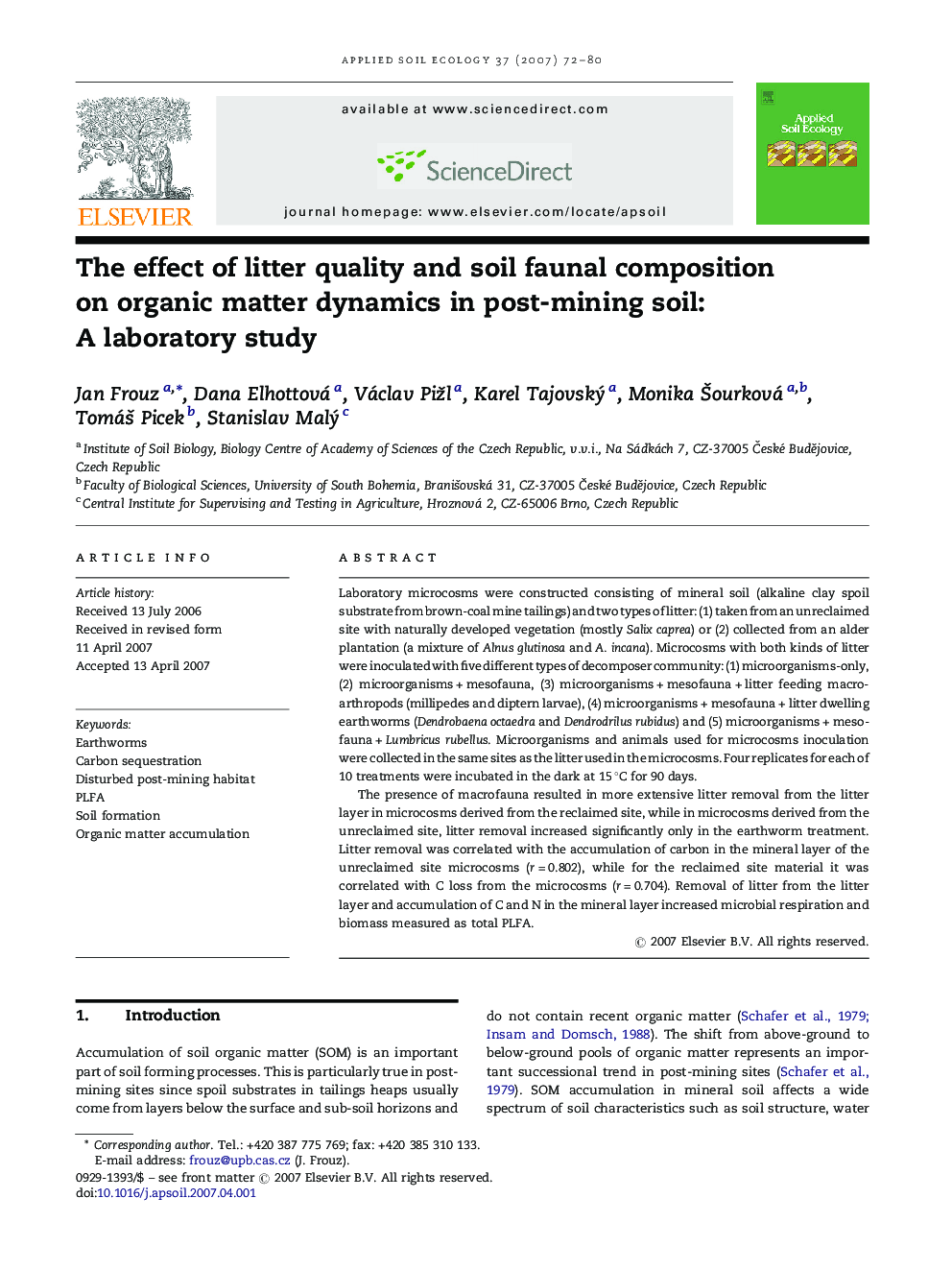| Article ID | Journal | Published Year | Pages | File Type |
|---|---|---|---|---|
| 4383387 | Applied Soil Ecology | 2007 | 9 Pages |
Laboratory microcosms were constructed consisting of mineral soil (alkaline clay spoil substrate from brown-coal mine tailings) and two types of litter: (1) taken from an unreclaimed site with naturally developed vegetation (mostly Salix caprea) or (2) collected from an alder plantation (a mixture of Alnus glutinosa and A. incana). Microcosms with both kinds of litter were inoculated with five different types of decomposer community: (1) microorganisms-only, (2) microorganisms + mesofauna, (3) microorganisms + mesofauna + litter feeding macro-arthropods (millipedes and diptern larvae), (4) microorganisms + mesofauna + litter dwelling earthworms (Dendrobaena octaedra and Dendrodrilus rubidus) and (5) microorganisms + mesofauna + Lumbricus rubellus. Microorganisms and animals used for microcosms inoculation were collected in the same sites as the litter used in the microcosms. Four replicates for each of 10 treatments were incubated in the dark at 15 °C for 90 days.The presence of macrofauna resulted in more extensive litter removal from the litter layer in microcosms derived from the reclaimed site, while in microcosms derived from the unreclaimed site, litter removal increased significantly only in the earthworm treatment. Litter removal was correlated with the accumulation of carbon in the mineral layer of the unreclaimed site microcosms (r = 0.802), while for the reclaimed site material it was correlated with C loss from the microcosms (r = 0.704). Removal of litter from the litter layer and accumulation of C and N in the mineral layer increased microbial respiration and biomass measured as total PLFA.
